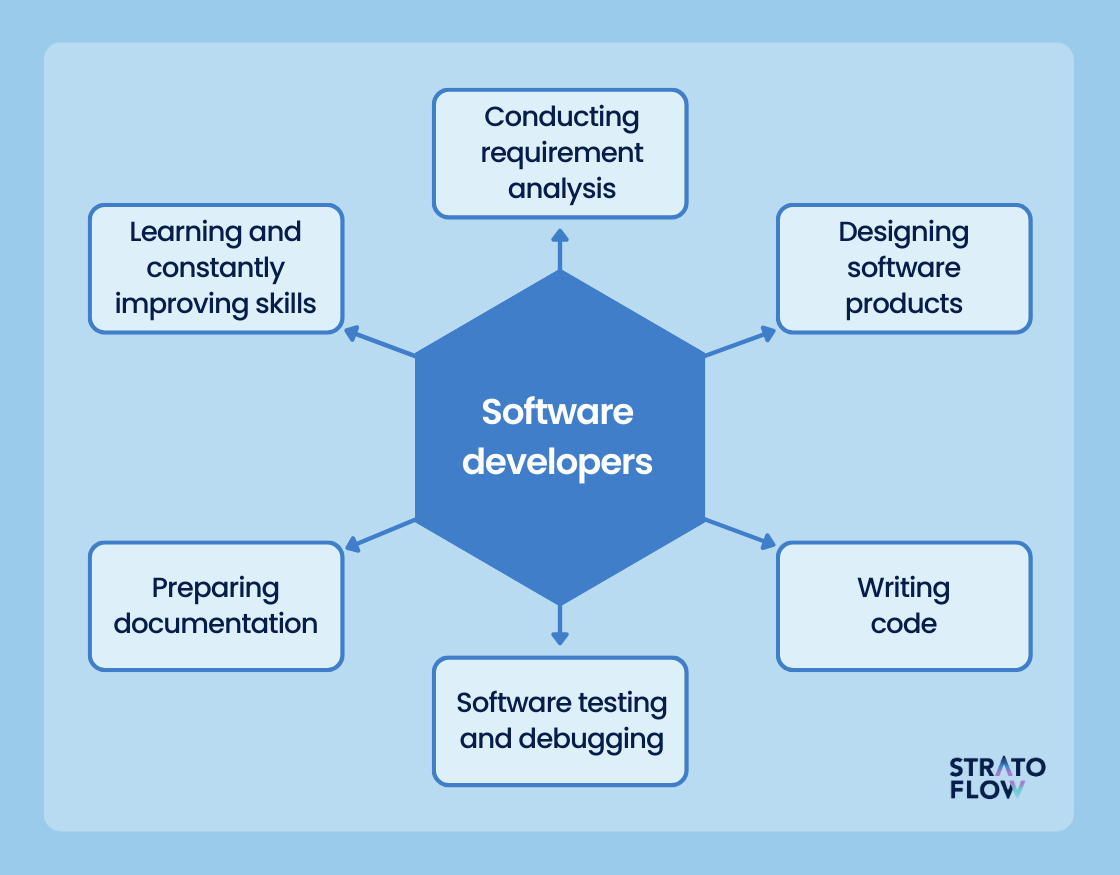Why Choosing the Right Software Development Partner Can Transform Your Project
Committed Developers vs. In-House Teams: Which Is Right for You?
The decision between using devoted developers and maintaining an internal group is a substantial one that can impact the trajectory of your jobs and general organization strategy. Dedicated programmers give a degree of flexibility and specific expertise that can be beneficial for certain, temporary initiatives. Alternatively, internal groups add to a natural business society and a nuanced understanding of long-term goals. By checking out crucial variables such as spending plan, task scope, and wanted control, you can much better determine which method lines up with your business requirements. The effects of this selection extend past prompt results-- take into consideration the broader impact on your organization landscape.
Recognizing Committed Programmers
The expanding need for specialized abilities in the tech market has actually led to the emergence of dedicated developers as a sensible solution for many organizations. These experts are generally gotten on a task basis, enabling companies to take advantage of particular know-how without the long-term commitment connected with full time hires. Dedicated developers are usually ingrained within a client's team, supplying versatility and scalability to meet job requirements.
This version permits organizations to access a global talent swimming pool, which is particularly helpful in a rapidly progressing technical landscape. Dedicated designers can be sourced from different geographical areas, making sure that companies can locate the appropriate ability at affordable prices. They frequently bring a wide range of experience and expertise, having actually worked with diverse jobs across different sectors.
Furthermore, dedicated developers can focus solely on the tasks handy, boosting efficiency and performance. They are geared up to integrate effortlessly into existing workflows, teaming up very closely with in-house teams to achieve task objectives. This method not only decreases the concern of recruitment and training yet additionally allows companies to remain active, adapting quickly to changing market demands and technological improvements.
Benefits of In-House Teams

Additionally, in-house groups often tend to have a much deeper understanding of the company's goal, worths, and objectives. This alignment can boost worker involvement and motivation, as group members really feel much more linked to their work and the organization's success. Furthermore, having a committed internal group permits for much better placement of methods and objectives, as these members are constantly concentrated on the business's concerns.
In-house teams also promote quicker decision-making processes, as they can react extra quickly to changes and difficulties. The established partnerships and familiarity with business procedures allow for structured process and decreased miscommunication. Eventually, the mix of a cohesive society, positioning with business goals, and reliable interaction makes in-house teams a valuable possession for many companies, particularly those looking to grow long-lasting development and advancement.
Cost Factors To Consider
When evaluating price considerations, both devoted programmers and internal teams existing unique economic effects for companies. Involving dedicated designers typically involves a pay-per-project or hourly rate model, which can be economical for businesses with rising and fall project needs. This strategy enables for adaptability in scaling sources up or down, guaranteeing that business only spend for the solutions they need.
In contrast, internal teams require fixed expenses, consisting of incomes, advantages, and overhead expenses such as office and equipment. While this design uses better control and instant availability of sources, it might cause higher long-lasting costs, particularly if the work does not warrant a permanent personnel.
Additionally, business should take into consideration the surprise prices related to employment and training of in-house workers, which can better stress budget plans. In many cases, the time and resources invested on handling an in-house team can take away from the company's core service goals.

Job Management and Flexibility
Project management and versatility are critical elements that influence the choice in between devoted developers and in-house groups. Dedicated designers commonly use a high degree of versatility, allowing organizations to scale resources up or down based on task demands. This agility can be specifically beneficial for companies experiencing rising and fall workloads or those seeking to introduce rapidly. Committed teams typically have developed procedures for managing projects effectively, leveraging particular techniques like Agile or Scrum, which assist in iterative progress and versatility.

Eventually, the useful reference choice in between committed designers and internal teams rests on the preferred level of adaptability and the details task administration requirements. Firms need to assess their functional dynamics, project intricacy, and source availability to establish which alternative lines up ideal with their calculated purposes.
Making the Right Selection
Choosing the ideal growth approach-- internal groups or specialized programmers-- calls for a careful assessment of different aspects that straighten with a firm's strategic goals. On the other hand, internal teams can provide much better continuity and combination with existing workers.
Following, examine your budget. Devoted developers commonly provide an economical option for short-term tasks, while internal groups may incur higher long-term expenses as a result of wages, advantages, and expenses costs. Assess the degree of control and collaboration preferred; in-house teams normally cultivate stronger interaction and positioning with company culture.
If instant results are needed, specialized programmers can be onboarded quickly, whereas developing an in-house group takes time for employment soft development and training. If constant development is important, investing in an internal group may generate better returns over time.
Verdict
In verdict, the decision in between devoted developers and in-house teams hinges on job requirements and organizational objectives. On the other hand, in-house teams cultivate a natural society and much deeper placement with lasting objectives.
The choice between making use of committed developers and preserving an internal team is a substantial one that can impact the trajectory of your projects and overall company method.Project management and adaptability are essential factors that influence the choice between devoted developers and in-house groups. hire dedicated developers.In contrast, internal groups might stand out in keeping a regular task monitoring structure due to their familiarity with the company's society and long-term goals. Committed programmers frequently provide an affordable option for short-term projects, while in-house groups might incur greater long-term expenditures due to salaries, benefits, and expenses prices.In final thought, the choice in between internal teams and specialized designers pivots on job requirements and organizational objectives